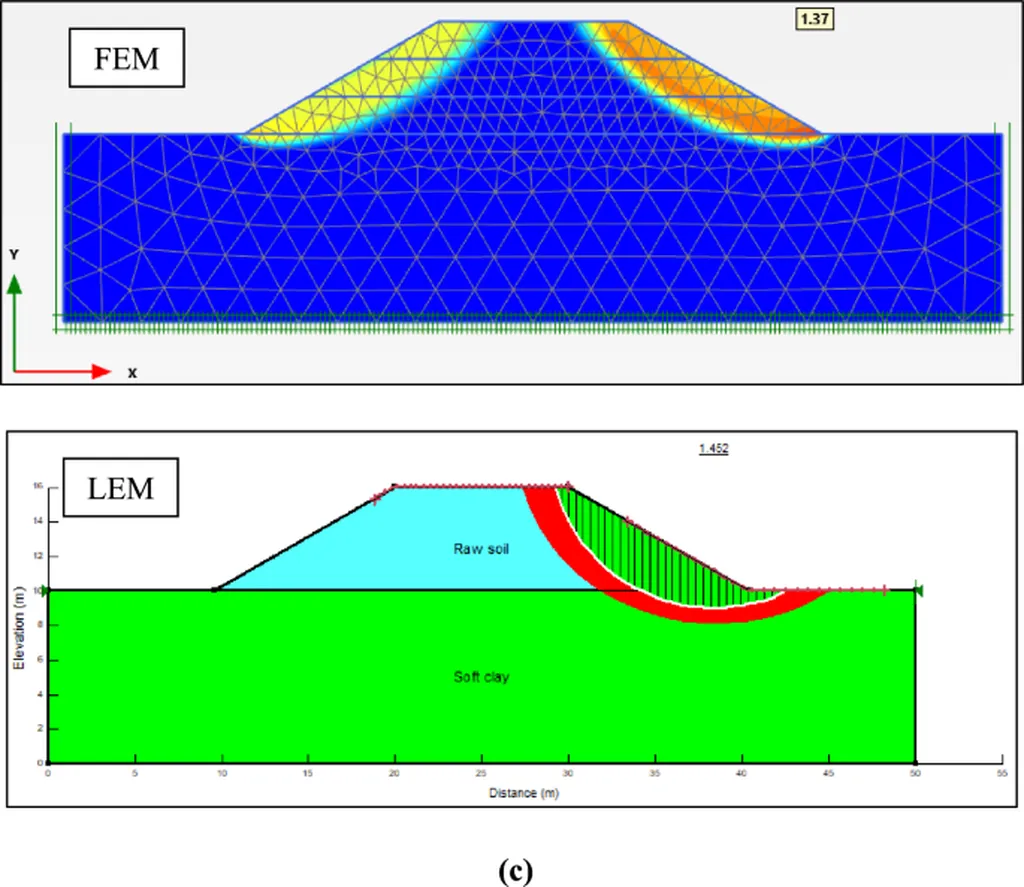In the quest to bolster the longevity and stability of transportation embankments, a groundbreaking study led by Dr. Al-Salamy Howaidah from the University of Kerbala has shed new light on the efficacy of geosynthetic reinforcements. Published in the esteemed *Magazine of Civil Engineering* (translated from Arabic as “Majallat Al-Muhandis Al-Madani”), the research delves into the behavior of multilayer geosynthetic-reinforced sandy embankments, offering promising insights for the construction and energy sectors.
Embankments, crucial for transportation infrastructure, often succumb to premature failure due to subpar materials, inadequate compaction, and overloading. Dr. Al-Salamy’s study aims to address these issues by exploring the use of multilayer geosynthetic reinforcements to enhance the performance of sandy embankments. The research involved four laboratory model tests, comparing reinforced and unreinforced embankments constructed within a large testing box.
The study utilized local poorly graded sand to build a 450 mm high embankment with a 1:1 side slope, resting on a 300 mm high sandy subgrade soil. In the reinforced models, three layers of either geotextile, geogrid, or a geocomposite (a combination of geotextile and geogrid) were incorporated with 150 mm vertical spacing. Non-destructive tests, including lightweight deflectometer, dynamic cone penetration, and field California bearing ratio tests, were conducted during construction to monitor performance.
The results were compelling. “Geosynthetic reinforcement significantly decreased surface settlement and increased load-carrying capacity,” Dr. Al-Salamy noted. The study found that the inclusion of geosynthetic layers, particularly geogrids, substantially improved the load-carrying capacity near the embankment side slope. “Geogrid lateral restraint and confinement proved to be more effective alternatives to sublayer improvement than geotextile or geocomposite,” Dr. Al-Salamy explained.
The implications for the energy sector are substantial. Transportation embankments are vital for the movement of heavy machinery and materials, especially in oil and gas fields. The enhanced stability and load-bearing capacity offered by geosynthetic reinforcements can lead to more durable and cost-effective infrastructure, reducing maintenance costs and downtime.
This research could shape future developments in the field by encouraging the wider adoption of geosynthetic reinforcements in embankment construction. As Dr. Al-Salamy’s findings gain traction, engineers and construction professionals may increasingly turn to geogrids and other geosynthetic materials to fortify their projects, ensuring longer-lasting and more reliable infrastructure.
In an industry where every advantage counts, this study offers a promising path forward, underscoring the importance of innovation in materials and techniques. As the construction sector continues to evolve, the insights from Dr. Al-Salamy’s work will undoubtedly play a pivotal role in shaping the future of embankment design and construction.

